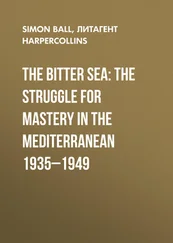Чарльз Дарвин - The Origin of Species by Means of Natural Selection Or, the Preservation of Favoured Races in the Struggle for Life
Здесь есть возможность читать онлайн «Чарльз Дарвин - The Origin of Species by Means of Natural Selection Or, the Preservation of Favoured Races in the Struggle for Life» весь текст электронной книги совершенно бесплатно (целиком полную версию без сокращений). В некоторых случаях можно слушать аудио, скачать через торрент в формате fb2 и присутствует краткое содержание. Год выпуска: 1999, Жанр: Биология, на английском языке. Описание произведения, (предисловие) а так же отзывы посетителей доступны на портале библиотеки ЛибКат.
- Название:The Origin of Species by Means of Natural Selection Or, the Preservation of Favoured Races in the Struggle for Life
- Автор:
- Жанр:
- Год:1999
- ISBN:нет данных
- Рейтинг книги:3 / 5. Голосов: 1
-
Избранное:Добавить в избранное
- Отзывы:
-
Ваша оценка:
- 60
- 1
- 2
- 3
- 4
- 5
The Origin of Species by Means of Natural Selection Or, the Preservation of Favoured Races in the Struggle for Life: краткое содержание, описание и аннотация
Предлагаем к чтению аннотацию, описание, краткое содержание или предисловие (зависит от того, что написал сам автор книги «The Origin of Species by Means of Natural Selection Or, the Preservation of Favoured Races in the Struggle for Life»). Если вы не нашли необходимую информацию о книге — напишите в комментариях, мы постараемся отыскать её.
The Origin of Species by Means of Natural Selection Or, the Preservation of Favoured Races in the Struggle for Life — читать онлайн бесплатно полную книгу (весь текст) целиком
Ниже представлен текст книги, разбитый по страницам. Система сохранения места последней прочитанной страницы, позволяет с удобством читать онлайн бесплатно книгу «The Origin of Species by Means of Natural Selection Or, the Preservation of Favoured Races in the Struggle for Life», без необходимости каждый раз заново искать на чём Вы остановились. Поставьте закладку, и сможете в любой момент перейти на страницу, на которой закончили чтение.
Интервал:
Закладка:
Several plants belonging to distinct orders habitually produce flowers of two kinds—the one open, of the ordinary structure, the other closed and imperfect. These two kinds of flowers sometimes differ wonderfully in structure, yet may be seen to graduate into each other on the same plant. The ordinary and open flowers can be intercrossed; and the benefits which certainly are derived from this process are thus secured. The closed and imperfect flowers are, however, manifestly of high importance, as they yield with the utmost safety a large stock of seed, with the expenditure of wonderfully little pollen. The two kinds of flowers often differ much, as just stated, in structure. The petals in the imperfect flowers almost always consist of mere rudiments, and the pollen-grains are reduced in diameter. In Ononis columnae five of the alternate stamens are rudimentary; and in some species of Viola three stamens are in this state, two retaining their proper function, but being of very small size. In six out of thirty of the closed flowers in an Indian violet (name unknown, for the plants have never produced with me perfect flowers), the sepals are reduced from the normal number of five to three. In one section of the Malpighiaceae the closed flowers, according to A. de Jussieu, are still further modified, for the five stamens which stand opposite to the sepals are all aborted, a sixth stamen standing opposite to a petal being alone developed; and this stamen is not present in the ordinary flowers of this species; the style is aborted; and the ovaria are reduced from three to two. Now although natural selection may well have had the power to prevent some of the flowers from expanding, and to reduce the amount of pollen, when rendered by the closure of the flowers superfluous, yet hardly any of the above special modifications can have been thus determined, but must have followed from the laws of growth, including the functional inactivity of parts, during the progress of the reduction of the pollen and the closure of the flowers.
It is so necessary to appreciate the important effects of the laws of growth, that I will give some additional cases of another kind, namely of differences in the same part or organ, due to differences in relative position on the same plant. In the Spanish chestnut, and in certain fir-trees, the angles of divergence of the leaves differ, according to Schacht, in the nearly horizontal and in the upright branches. In the common rue and some other plants, one flower, usually the central or terminal one, opens first, and has five sepals and petals, and five divisions to the ovarium; while all the other flowers on the plant are tetramerous. In the British Adoxa the uppermost flower generally has two calyx-lobes with the other organs tetramerous, while the surrounding flowers generally have three calyx-lobes with the other organs pentamerous. In many Compositae and Umbelliferae (and in some other plants) the circumferential flowers have their corollas much more developed than those of the centre; and this seems often connected with the abortion of the reproductive organs. It is a more curious fact, previously referred to, that the achenes or seeds of the circumference and centre sometimes differ greatly in form, colour and other characters. In Carthamus and some other Compositae the central achenes alone are furnished with a pappus; and in Hyoseris the same head yields achenes of three different forms. In certain Umbelliferae the exterior seeds, according to Tausch, are orthospermous, and the central one coelospermous, and this is a character which was considered by De Candolle to be in other species of the highest systematic importance. Professor Braun mentions a Fumariaceous genus, in which the flowers in the lower part of the spike bear oval, ribbed, one-seeded nutlets; and in the upper part of the spike, lanceolate, two-valved and two-seeded siliques. In these several cases, with the exception of that of the well-developed ray-florets, which are of service in making the flowers conspicuous to insects, natural selection cannot, as far as we can judge, have come into play, or only in a quite subordinate manner. All these modifications follow from the relative position and inter-action of the parts; and it can hardly be doubted that if all the flowers and leaves on the same plant had been subjected to the same external and internal condition, as are the flowers and leaves in certain positions, all would have been modified in the same manner.
In numerous other cases we find modifications of structure, which are considered by botanists to be generally of a highly important nature, affecting only some of the flowers on the same plant, or occurring on distinct plants, which grow close together under the same conditions. As these variations seem of no special use to the plants, they cannot have been influenced by natural selection. Of their cause we are quite ignorant; we cannot even attribute them, as in the last class of cases, to any proximate agency, such as relative position. I will give only a few instances. It is so common to observe on the same plant, flowers indifferently tetramerous, pentamerous, etc., that I need not give examples; but as numerical variations are comparatively rare when the parts are few, I may mention that, according to De Candolle, the flowers of Papaver bracteatum offer either two sepals with four petals (which is the common type with poppies), or three sepals with six petals. The manner in which the petals are folded in the bud is in most groups a very constant morphological character; but Professor Asa Gray states that with some species of Mimulus, the aestivation is almost as frequently that of the Rhinanthideae as of the Antirrhinideae, to which latter tribe the genus belongs. Aug. St. Hilaire gives the following cases: the genus Zanthoxylon belongs to a division of the Rutaceae with a single ovary, but in some species flowers may be found on the same plant, and even in the same panicle, with either one or two ovaries. In Helianthemum the capsule has been described as unilocular or tri-locular; and in H. mutabile, "Une lame PLUS OU MOINS LARGE, s'etend entre le pericarpe et le placenta." In the flowers of Saponaria officinalis Dr. Masters has observed instances of both marginal and free central placentation. Lastly, St. Hilaire found towards the southern extreme of the range of Gomphia oleaeformis two forms which he did not at first doubt were distinct species, but he subsequently saw them growing on the same bush; and he then adds, "Voila donc dans un meme individu des loges et un style qui se rattachent tantot a un axe verticale et tantot a un gynobase."
We thus see that with plants many morphological changes may be attributed to the laws of growth and the inter-action of parts, independently of natural selection. But with respect to Nageli's doctrine of an innate tendency towards perfection or progressive development, can it be said in the case of these strongly pronounced variations, that the plants have been caught in the act of progressing towards a higher state of development? On the contrary, I should infer from the mere fact of the parts in question differing or varying greatly on the same plant, that such modifications were of extremely small importance to the plants themselves, of whatever importance they may generally be to us for our classifications. The acquisition of a useless part can hardly be said to raise an organism in the natural scale; and in the case of the imperfect, closed flowers, above described, if any new principle has to be invoked, it must be one of retrogression rather than of progression; and so it must be with many parasitic and degraded animals. We are ignorant of the exciting cause of the above specified modifications; but if the unknown cause were to act almost uniformly for a length of time, we may infer that the result would be almost uniform; and in this case all the individuals of the species would be modified in the same manner.
Читать дальшеИнтервал:
Закладка:
Похожие книги на «The Origin of Species by Means of Natural Selection Or, the Preservation of Favoured Races in the Struggle for Life»
Представляем Вашему вниманию похожие книги на «The Origin of Species by Means of Natural Selection Or, the Preservation of Favoured Races in the Struggle for Life» списком для выбора. Мы отобрали схожую по названию и смыслу литературу в надежде предоставить читателям больше вариантов отыскать новые, интересные, ещё непрочитанные произведения.
Обсуждение, отзывы о книге «The Origin of Species by Means of Natural Selection Or, the Preservation of Favoured Races in the Struggle for Life» и просто собственные мнения читателей. Оставьте ваши комментарии, напишите, что Вы думаете о произведении, его смысле или главных героях. Укажите что конкретно понравилось, а что нет, и почему Вы так считаете.












